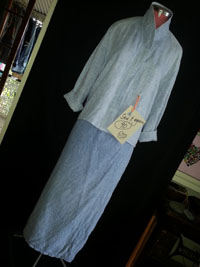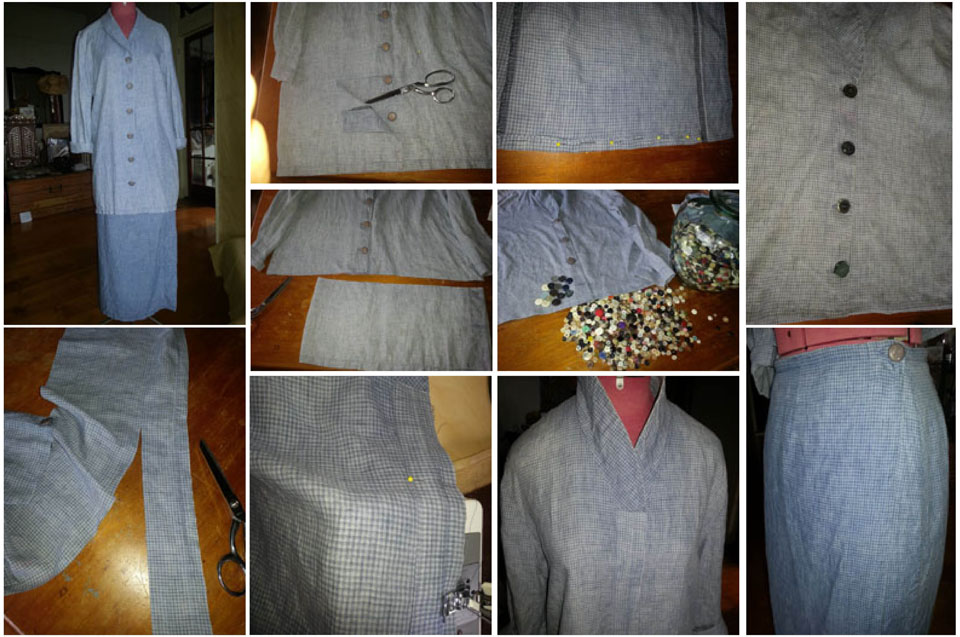
This casual linen suit made ages ago is refreshed by shortening the jacket and covering up the buttons. We renovate houses, why not our wardrobes? One way to do that is to sew it again.
Our clothes encapsulate our body. What we chose to wear is extremely personal – we want to look right, feel sharp, mirror trends and/or make a statement about who we are.
In the same way we may make informed food choices to nurture our health and wellbeing, we can make informed clothing choices which are good for ourselves and the planet.
Over-consumption of the wrong sorts of food is feeding obesity problems in most first-world countries – and that’s exacerbated by the many labour-saving devices we have on hand. Spending time growing a few herbs and cooking meals from scratch makes for a healthful, meaningful life.
By all accounts, the world is drowning in excess clothing and marketers are constantly pushing us to buy more new stuff through sales catalogues, inducements and prestige pedalling.
I’m the downstream beneficiary of this culture because my guilty habit is an addiction to op-shopping where there’s an abundance of rejects available for a song. It is rare that clothing is discarded because it is worn out, more that the owner has moved on to the next best thing.
After rescuing natural fibre clothing from op shops for an extended period, I’m spending this year reinventing that as a way of demonstrating how a little time and effort can upcycle what we already have for a second or third life.
I like wearing linen unironed to let the natural crinkles speak volumes about an eco-approach to a quality natural fibre – and let body heat smooth them out. Even if you iron (and starch?) linen it inevitably crushes in an even more pronounced way, which is often what puts people off this gorgeous fibre which is one of the most ecologically sound we can own.
Linen lasts so well that I hold on to all I have – including this casual suit I made 15 years ago from two different Vogue patterns. I did wear it a lot, particularly the jacket with another long stretch skirt, which is evident from the two-tone look. With the mid-calf length of the wrap-skirt now ‘on trend’, I’ve just shifted the buttons to comfortably fit my current waist size. To update the jacket, I stood the collar up, then cut the jacket length to be shorter and used a piece of the off-cut to cover the front buttons. Although it was not necessary to do so, I salvaged the buttons and replaced them with mismatched flat ones.
With just a little effort, time and patience, I’m turning upcycling into recreation and showing a way of dressing that respects and values existing natural resources at the same time as it is ethical and sustainable.
